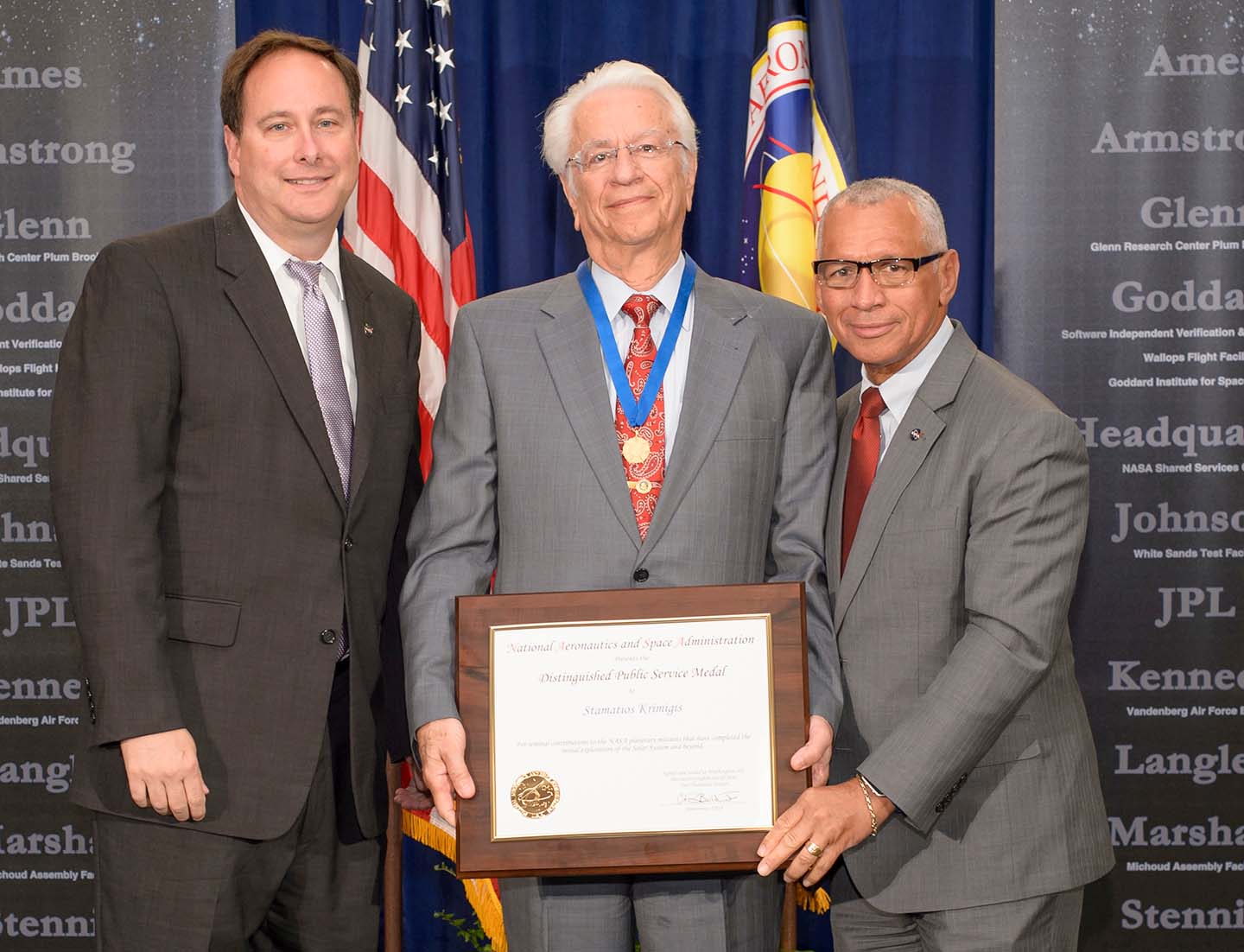Press Release
Applied Physics Laboratory Space Exploration Pioneer Tom Krimigis Receives NASA's Highest Service Award
Fri, 07/01/2016 - 10:47
Stamatios “Tom” Krimigis, a Johns Hopkins University Applied Physics Laboratory scientist whose storied professional career has closely paralleled American space exploration, has been awarded NASA’s highest service honor.
Krimigis received the NASA Distinguished Public Service Medal in a ceremony June 28 at NASA Ames Research Center in Mountain View, California.
“When I think about the comprehensive exploration of our solar system, there’s really only one name that comes to mind — and that’s Dr. Tom Krimigis,” said James Green, Planetary Science Division director at NASA Headquarters, Washington. “For everything Tom has done for NASA and this nation, he richly deserves this award.”
“We are incredibly proud of Tom and this well-deserved recognition for his lifelong efforts to advance space exploration and science,” said APL Director Ralph Semmel. “Tom is a pioneer and visionary leader whose innovations helped inspire the creation of NASA’s Discovery and New Frontiers programs. His contributions over more than four decades have significantly expanded our view of the solar system and knowledge of the universe.”
Born in Chios, Greece, Krimigis earned a bachelor’s degree in physics from the University of Minnesota and a master’s and doctorate in physics from the University of Iowa, studying under James Van Allen, the former APL scientist who discovered Earth’s radiation belts. He served on the faculty of the Physics and Astronomy Department at Iowa before joining APL in 1968. He headed the Space Physics and Instrumentation Group, became chief scientist in 1980 and became head of the Space Department in 1991.
He is the only scientist in the world to lead or participate in space physics experiments on all nine classical planets. He has served as a principal investigator on five NASA missions — including the legendary Voyagers and the Cassini Saturn orbiter — and as a co-investigator on many others.
Krimigis has designed, built, flown and analyzed data from 21 instruments on various NASA and European Space Agency missions. His Low-Energy Charged Particle instrument flies aboard both Voyager spacecraft; on Voyager 1, LECP data was essential to determining that a human-built vehicle had left the solar system for the first time, in 2012. Krimigis was also instrumental in establishing NASA’s groundbreaking Discovery Program of low-cost planetary missions, as well as the New Frontiers Program, for which the APL-built New Horizons to Pluto was the first mission. He is also a co-investigator on Solar Probe Plus.
As a researcher, Krimigis has published more than 570 articles in scientific journals and books — including findings on solar observations, planetary magnetospheres and the charged particles that flood the space between the planets — and is one of the most cited scientists in his field. The award citation reads: “For seminal contributions to the NASA planetary missions that have completed the initial exploration of the Solar System and beyond.”
About the Award: NASA’s Distinguished Public Service Medal is the agency’s highest form of recognition awarded to any nongovernment individual, whose distinguished service, ability or vision has personally contributed to NASA’s advancement of the nation’s interests. The recipient’s achievement or contribution must demonstrate a level of excellence that has made such a profound or indelible impact to NASA mission success that other forms of recognition by NASA would be inadequate.
